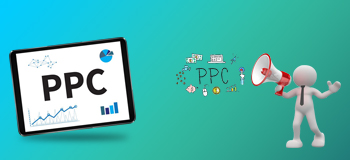5 Types of Interactive Content That
Will Help You Win
- btle_admin
- October 12, 2022
- 11:26 am
- No Comments
We’re amid a golden age of content creation. This means that customers can be careful about what content they pay attention to and what they disregard. Interactive infographics are one of the greatest sorts of information for keeping them engaged.
In a world where 7 out of 10 customers will only engage with your marketing content if they individualize it for them, interactive infographic design cuts through the clutter and addresses them.
What is the Effectiveness of Interactive Content?
The conversion rate for high-quality visual interactive material is 70%. This is higher than the average conversion rate for any other sort of material.
Interactions urge your audience to take part actively in the tale you’re delivering via interactive content. It promotes self-directed learning and user-driven discovery, allowing users to pursue their passions and learn in their preferred manner.
Video, motion graphics, and other forms of visual content help readers follow the plot. If you want to lead people on a specific path, this is ideal. When you have a lot of information to give, though, interactive material might be a more interesting, and ultimately instructional alternative.
For digital marketing, engagement is everything, and as engagement rises, conversions rise with it. Because participation, such as Likes, Shares, and RT, spreads your message beyond your online community to the connections selected by your active community, it becomes more powerful.
As a result, each engaged user promotes a brand and provides a tacit endorsement of your organization. How can you increase engagement, then? Of course, it’s all about the content.
Boost Content Engagement
Consumers are becoming more discerning in selecting material that applies to them in a world where digital marketing is becoming increasingly prevalent. So, out with the static content and in with the interactive content, according to 93% of marketers.
But How Effective is Interactive Content?
According to one study, high-quality visual interactive information converts at a rate of 70%, which is far higher than any other type of material. Isn’t that impressive?
We assume that if you’re reading this, you’re seeking the finest sorts of interactive content to boost engagement. It makes no difference whether we are correct. We’d love to share what we’ve learned!
What is Interactive Content?
Let’s talk about interactive content for a moment before we get into the different categories. A form of interactive content is anything that involves users actively participating rather than simply watching their screens.
What distinguishes this internet marketing strategy from others is that it promotes user-driven discovery and self-guided learning. You may create one-of-a-kind experiences that are both playful and informative by using interactive material. Whether you employ motion graphics, movies, or other sorts of visual content, you provide your readers with the ability to take action, which boosts engagement.
Here are some more statistics that back up why interactive content is the way of the future in digital marketing:
- Static material receives half as much engagement as interactive stuff.
- Interactive content is one of the top three content formats favored by 45% of B2B buyers.
- GIFs and GIF-based online quizzes, for instance, get shared 40 times more often on social media.
- Interactive content, according to 88% of marketers, sets them distinct from their competitors.
- 70% of marketers feel that interactive content converts website visitors quickly.
- 91% of customers seek more non-interactive material.
- Only 20% of web consumers read the text, even though 80% of them will view a video.
You now understand why interactive content is such a powerful marketing tool.
The Advantages of Interactive Content
Is interactive content worth the hype, as any good marketer would ask? Yes, is the quick answer. Here are three interesting reasons to use interactive content in your business strategy:
1. Increase the rate of engagement
Not only can interactivity increase conversions by 40-50%, but consumers also love to share cool, unique interactive material, which increases by up to 28%.
Even the simplest forms of interactive content can provoke a response, making it more interesting than a written article – even if it is well-written. Across all industries and niches, competition is severe. It’s difficult to stand out, which is why you should optimize your content to provide a more engaging, immersive experience.
Brands frequently use interactive content as a lead magnet to capture email addresses. People who sign up for this have a genuine interest in the company. As a result, they are more involved and likely to convert.
2. More Data Capture
This is the data-driven era, and the information we gather about online consumers is perhaps the most important data for marketers. The more data you have, and the more precise and relevant it is, the better your marketing strategies will perform. For many businesses, the challenge is getting data in a form that consumers can trust and respect.
So, how might interactive content be of extra help?
It will be easier to persuade consumers to share their information if you develop engaging content that attracts their attention and provides a tailored experience. Users will enjoy themselves, and you will gain useful information for lead nurturing.
3. Boost Brand Loyalty
Quizzes, polls, and surveys are just a few types of interactive content that may collect lead data and then tailored content. To establish yourself as an expert, follow the E.A.T. Principle:
- Expertise : The page should feature high-quality material created by a professional writer.
- Authority : The website should be authoritative on the subject.
- Trustworthiness : other authoritative links from trusted sites must point to the site
You learn more about your audience as you collect data through interactive content, making it easier to design material they will enjoy. This method of highly focused content marketing will quickly develop trust and authority, allowing you to build a larger following for repeat visitors.
Types of Interactive Content that Improve Engagement
And now it’s your lucky day. Here are the five different interactive content you can use to boost engagement:
1. Interactive Infographics
An infographic is no longer as successful as it once was. Almost everyone uses them, which means you’ll have more competition, and readers will be less fascinated by them after seeing so many.
Solution? Add some interactive components!
Infographics are popular for a variety of reasons. They’re visually appealing, keep customers interested in the brand narrative, and provide useful information without sounding too boring, to mention a few. They’re also quite easy to share! If you want your content to enhance engagement and conversion, you must now up to your game by adding interaction.
While developing interactive infographics takes more time and work than making static infographics, the benefits are significantly larger. You won’t believe how many shares and views you’ll get simply by making your infographics interactive.
Inspiration for your interactive infographic:
Create infographics that allow users to manipulate the data to make it more relevant to them, flowcharts that direct participants to different conclusions based on their responses, scrollable timeline infographics, or comparison charts.
Tools like Ceros, Visme, and Displayr can help you make dynamic clickable infographics.
2. Polls and Surveys
People enjoy answering questions online, and these two types of interactive content allow them to do so while also allowing them to share their answers. Polls and surveys, despite their long history, remain significant challenges in the digital sphere, particularly on social media. Every day, for example, Facebook conducts a poll to gauge public opinion on Covid-19.
Consumer opinion, shopping preferences, and user insights were all collected through polls and surveys by marketers. Video embeds, interactive buttons, and animations can all help to clarify the question or topic at hand. Another advantage of polls is that they allow participants to see how others voted. This gives them an idea of how their preferences and opinions related to those of others in their demographic, which is a terrific way to keep people’s attention.
Polls and surveys are among the most popular forms of interactive content, particularly on social media. You may simply set them up and configure them to gather useful data from your audience, such as:
- Feedback from customers on your content, products, services, or customer service
- Names, addresses, locations, and interests of the audience, for example
- Industry preferences, favourite brands, item categories, and pricing
If you’re not sure what the difference is between a poll and a survey, let us explain:
On a website, polls are usually found near the bottom of the page and are highly unobtrusive, needing little involvement to complete fast. Surveys are more involved and cause more interaction.
Polls and surveys have endured the test of time as one of the most popular forms of interactive content because they are inconspicuous, engaging, and enjoyable to complete. The idea is not to ask too much because you can scare folks away and so end up with nothing.
Inspiration for Your Interactive Quiz
You can construct a variety of quizzes and polls for your audience, including personality quizzes, popularity polls to determine whether your consumers prefer X or Y, and questionnaires to address a specific issue.
Quiz, LeadQuizzes, Apester, and Quiz Maker, for example, all have features that assist you in setting up your quiz or poll and providing tailored responses.
3. Interactive Videos
Videos are one of the most engaging forms of media available today. Video is one of the easiest sorts of interactive content to employ in marketing because it gives an immersive experience for everyone. It enables advertisers to engage their target audience in ways that static graphics cannot.
According to Wyzowl, 86% of marketers use video as a marketing tool, and 93% consider it to be a significant element of their strategy.
What about interactive videos? Are they equally captivating? Do they have a higher level of engagement than regular videos?
These figures tell the tale:
- Interactive video engages audiences “well” or “very well,” according to 70% of marketers.
- The interactive video raised conversion by 35% and increased sales by 25% for 35% of advertisers.
- Interactive videos are 44% longer to watch than traditional videos.
- Interactive video advertising, according to Mobilemarketer, increase the watching duration by 47%. These ads were also found to be 32% more memorable than typical video ads.
Furthermore, the interactive video gives consumers a game-like experience, keeping them engaged and wanting more. Using interactive video increased user activity by 591%.
The interactive video takes video marketing to a whole new level. It raises your sales productivity through buyable links and amplifies your marketing approach by increasing brand interaction and gathering customer insights.
Your Interactive Video Inspiration
Create training films that actively engage consumers in learning about your product; interactive demos and split narrative movies that allow viewers to choose their preferred ending; and narrative videos where the viewer’s interaction drives each stage.
With programs like Storygami, Wirewax, and Vidzor, you can add interactive elements to your videos.
4. Augmented Reality
Augmented reality (AR) technology is the ultimate in interactive technology. While virtual reality (VR) makes a lot of noise, augmented reality (AR) is considerably more marketable. Experts predict that AR will continue to outperform VR in terms of market share.
Consumers like stores that offer augmented reality experiences, with 71% saying they would shop more frequently if a retailer offered it. In 2020, a hundred million people used augmented reality to shop, with 83.1 million Americans using the technology monthly. This can only mean one thing: in 2022 and beyond, augmented reality will be a game-changer in retail.
AR makes it easier for online companies to enhance customer engagement and sales. It gives customers the ability to visualize and change things in 3D, creating a completely new customer experience.
5. Interactive E-books and White Papers
If you’re having trouble selling your e-books, it’s time to try something different. Go interactive, that’s right! Especially if you publish large, dense content, interactive e-books are the ideal approach to persuade people to read them. Scientific studies and study articles, we’re talking to you.
E-books and white papers condense a lot of information into a little package. But it is the issue, as today’s consumers expect a simple path to rapid pleasure.
People scan these documents or avoid them altogether because of the sheer volume of words they contain. They don’t want to get lost in a sea of words in search of a single solution. Making your ebooks interactively solves this problem. You give your readers a unique way to move through the material, making it easier and more enjoyable for them to read. It’s no longer difficult to find relevant topics.
With an interactive e-book, there are a few proven strategies to boost engagement:
- Create a clickable table of contents: This allows your viewers to jump to the portions that interest them the most.
- You should embed videos: Embedding videos into your e-book is a fantastic method to create an engaging piece of material, especially if you’re addressing a complex topic.
- Create a clickable table of contents: You can use animated characters, animated motions, animated drawings, and even special effects to provide that wow factor.
- Create a clickable table of contents: If you must add statistics or data, interactive graphs and charts are a good way to do it.
So, if you can create interactive e-books and white papers, you can instantly boost valuable pillar content pieces to make them more engaging, interesting, and shareable.
Inspiration for Your Interactive Ebook and White Paper:
The possibilities are endless when it comes to interactive eBooks and whitepapers. You can publish the findings of your most recent report, create a clickable case study with statistics, or develop a how-to guide with interactive components that allow readers to participate.
iBook Author and Kindle Textbook Creator are two tools that can help you get your eBook ready to launch.
Using Social Media to Promote Your Interactive Content
It’s time to get your interactive material in front of people once you’ve finished creating it. Because they are gregarious, participatory platforms in their own right, sites like Facebook, Twitter, and Instagram are ideal for promoting your eBooks, quizzes, and infographics. Social media users tend to share interactive information more because it is usually quite graphic.
How can You Advertise Your Interactive Content?
Because interactive content such as infographics, eBooks, and whitepapers are aesthetically engaging, you may include a CTA such as “Learn more,” “Download now,” or “Sign up” with the social media links you publish. You may also automate your promotion by creating a social media calendar or a content schedule.
That concludes the five most effective sorts of interactive content for your modern marketing approach. Text-based material, as well as emails, e-books, white papers, and good old-fashioned blog entries, have a place. There is no doubt that people desire interactive content and immersive experiences from brands. As a result, content as we know it is about to transform.
Popular Categories
Newsletter
Get free tips and resources right in your inbox, along with 10,000+ others
Latest Post
 Social Media Marketing
Social Media Marketing Discover How Social Media Lives Pull More Audiences
 Digital Marketing Strategy
Digital Marketing Strategy 


